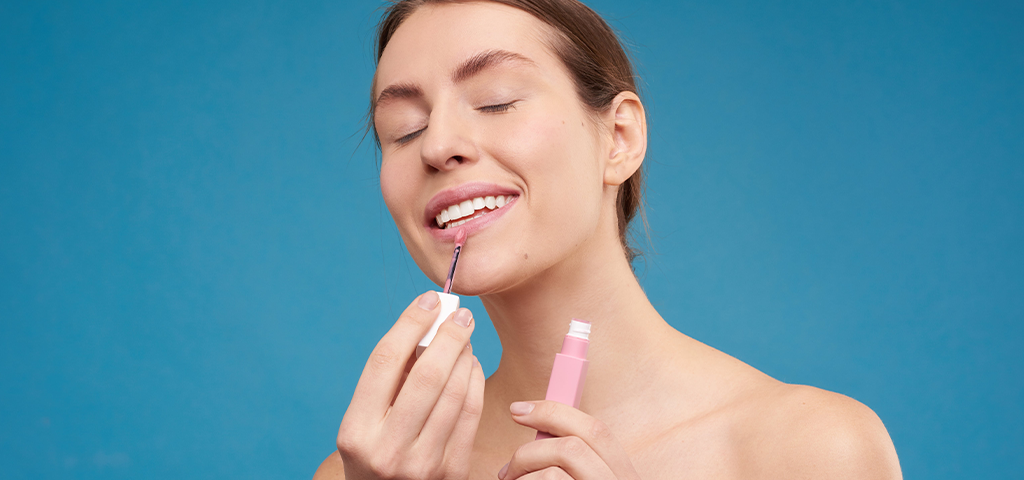Are You Using Toxic Makeup? What You Need to Know

In the pursuit of beauty, the cosmetics industry has seamlessly woven itself into our daily routines. Yet, behind the artful disguise of perfectly applied makeup lies a potential hidden reality – the presence of toxic chemicals that could pose serious health risks. This blog delves into the concerning landscape of toxicity in cosmetics, examining common harmful ingredients, the relaxed regulatory environment, and the potential health impacts of prolonged exposure. Join us as we unveil the hidden dangers concealed in your makeup bag, exploring what makeup is made of and understanding if makeup could be harmful to your health.
Understanding Toxic Ingredients
Cosmetics, products designed to enhance beauty, have a not-so-glamorous side because they often contain harmful components. These substances, found in many cosmetic products, have been linked to serious health issues like cancer, reproductive problems, developmental delays, and birth defects. Many popular brands, unknown for making makeup that can cause cancer or has toxic ingredients, are notable contributors to these health risks. It’s essential to identify and avoid these ingredients to make sure the products you use are safe for your skin and overall health.
- Formaldehyde: Formaldehyde is a colorless, strong-smelling gas that is commonly used in a liquid form as a preservative in various products, including makeup. Its preservative properties are used to prevent bacterial growth and extend the shelf life of personal care items such as shampoos, conditioners, and nail polishes. Despite its efficacy as a preservative, formaldehyde is a known irritant and allergen. Prolonged exposure to formaldehyde has been associated with adverse health effects, ranging from respiratory issues to more severe conditions. The International Agency for Research on Cancer (IARC) has classified formaldehyde as a Group 1 human carcinogen. This means that there is sufficient evidence to support its association with certain cancers, particularly throat cancer and leukemia.
- Lead: Despite regulations aiming to restrict its use, this toxic heavy metal continues to be detected, particularly in lipsticks and eyeliners. Lead can cause health issues, including toxicity affecting the liver, kidneys, hematopoietic system, and nervous system. Additionally, the IARC has recognized inorganic lead compounds as likely carcinogenic to humans (Group 2A). Chronic exposure to lead, even in small amounts, has been linked to serious health concerns, including neurological damage and developmental delays, making it an alarming ingredient to look out for.
- Asbestos: Asbestos, a known carcinogen, is found in talc-containing cosmetics, such as powders, eye shadows and blushes. Talc is a common ingredient found in these powdered makeup products and often coexists with naturally occurring asbestos. The tricky nature of asbestos lies in its fibrous structure, which, when disturbed, releases microscopic particles into the air. Inhalation of asbestos fibers poses a significant health risk, particularly concerning respiratory issues, such as lung scarring and cancer.
- Phthalates are a group of chemical compounds commonly used by the cosmetics industry to enhancing the flexibility and durability of various products. These versatile chemicals often find their way into an array of cosmetic formulations, including fragrances, hair sprays, and nail polishes. However, they are known endocrine disruptors, capable of interfering with hormone function in the body. Prolonged exposure to these chemicals has been linked to a range of health concerns, such as reproductive abnormalities, hormonal imbalances, and developmental issues.
- Toluene: a colorless liquid with a distinctive sweet smell, is a solvent commonly found in nail polishes and hair dyes. This chemical is frequently used for its smooth texture and quick-drying properties. Inhalation or skin exposure to toluene vapors can lead to a range of adverse effects, including headaches, dizziness, and nausea. Chronic exposure has been associated with more severe health issues such as damage to the nervous system, liver, and kidneys.
- Benzophenone: a chemical compound that is commonly used as a UV filter and fragrance enhancer. It is often found in sunscreens, perfumes, and various nail polishes to protect against ultraviolet (UV) radiation and contribute to the product’s ability to resist changes in its chemical composition, color, or efficacy when exposed to light. However, studies have linked this compound to endocrine disruption and potential carcinogenic effects, raising questions about its safety in personal care products. Prolonged exposure has been associated with hormonal changes, skin irritation, and sun sensitivity.
Decoding Mascara: What’s in it
Mascara typically consists of water, waxes, pigments, and film-formers. However, it’s essential to be cautious about certain ingredients commonly found in mascaras, such as parabens and phthalates. Parabens, known for their preservative properties, have raised concerns due to their potential endocrine-disrupting effects. Additionally, phthalates, which enhance the flexibility and durability of products, can interfere with hormone function. Opting for mascaras labeled as “paraben-free” and “phthalate-free” may reduce potential risks.
Waterproof mascaras often contain additional ingredients such as silicone polymers and film-forming agents to create a water-resistant barrier. While these formulations are effective in preventing smudging, prolonged use may lead to challenges during removal. The rubbing and tugging required for removal can cause eyelash breakage and eye irritation. It’s advisable to use waterproof mascara sparingly and with care, especially if you have sensitive eyes.
Bad Ingredients in Lotion
Body lotions, designed to moisturize and nourish the skin, can also harbor harmful ingredients. Common culprits include synthetic fragrances, parabens, and certain preservatives. Fragrances may contain phthalates, known endocrine disruptors. Parabens, as mentioned earlier, have been linked to potential health risks. Choosing body lotions labeled as fragrance-free or formulated without parabens can be a safer option.
Government Regulation and the Impact of Prolonged Exposure
Despite the evident risks associated with these toxic ingredients, the regulation of the cosmetics industry remains remarkably lenient. The U.S. Food and Drug Administration (FDA), in charge of making sure our cosmetics are safe, allows companies to use various industrial chemicals without making them go through mandatory safety tests or a thorough review. This lack of strict oversight raises concerns about the long-term health impacts of continuous exposure to these potentially harmful substances.
One of the big issues contributing to the toxicity in cosmetics is the lack of stringent safety testing. Unlike pharmaceuticals, cosmetics are not required to undergo rigorous testing before reaching the market. This absence of pre-market approval means that consumers may unwittingly expose themselves to untested formulations with unknown health consequences.
The fact that some chemicals in our everyday products lack enough safety information, and could potentially affect our health, raises worries about what might happen if we use them regularly. Since personal care items like cosmetics are things we use every day, it’s important to think about the potential risks they might have. This becomes even more crucial when we consider the long-term impact on our health from using these products over and over again.
The Search for Safe Cosmetics
As more people learn about the risks in toxic cosmetics, they’re on the lookout for safer choices. Finding safe cosmetics involves checking labels, exploring brands that openly share what they use and prioritize safety, and understanding certifications like ‘organic’ or ‘cruelty-free.’ Safe cosmetics are crafted with your health in mind. Signs of safety in cosmetics include clear ingredient lists, sticking to high-quality and safety standards, and a commitment to being cruelty-free and sustainable
Several cosmetic brands have garnered acclaim for their dedication to safety and quality. One notable safe cosmetic brand is Beautycounter, recognized for its rigorous ingredient selection process and commitment to transparency. Dr. Hauschka, a pioneer in natural skincare, emphasizes the use of organic and biodynamic ingredients. Additionally, Ilia Beauty has gained popularity for its clean and conscious approach to beauty, offering a range of safe and effective cosmetic products. Please do your own due diligence on these companies and their products.
Exploring Valuable Resources for Cosmetic Safety
For more information regarding cosmetic testing and safety, you can explore the Environmental Working Group’s Skin Deep database at www.ewg.org/skindeep. This resource provides valuable insights into the safety of various cosmetic products, illuminating regulatory gaps that demand attention. Another informative source is the Campaign for Safe Cosmetics, accessible at www.safecosmetics.org, which serves as an advocacy group offering insights into the regulatory landscape. Additionally, for comprehensive industry assessments, you can visit the Cosmetic Ingredient Review (CIR) panel’s website at www.cir-safety.org. These platforms are designed to be reader-friendly, providing a wealth of information on cosmetic safety and shedding light on the regulatory challenges faced by the industry.
Final Word
In conclusion, the common presence of harmful chemicals in cosmetics highlights the need for more awareness and better regulations. By making informed choices, supporting safe brands, and calling for stricter rules, consumers can lead the way for change. As we uncover the hidden risks in our makeup bags, moving toward healthier beauty requires all of us to prioritize safety, transparency, and informed decisions, steering clear of toxic makeup brands.





